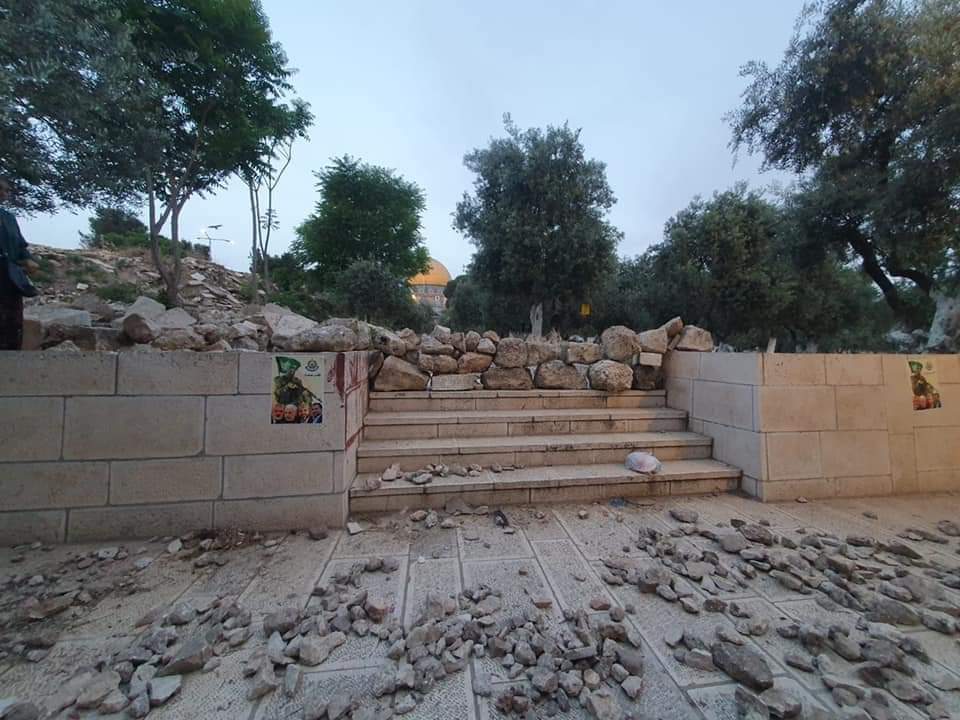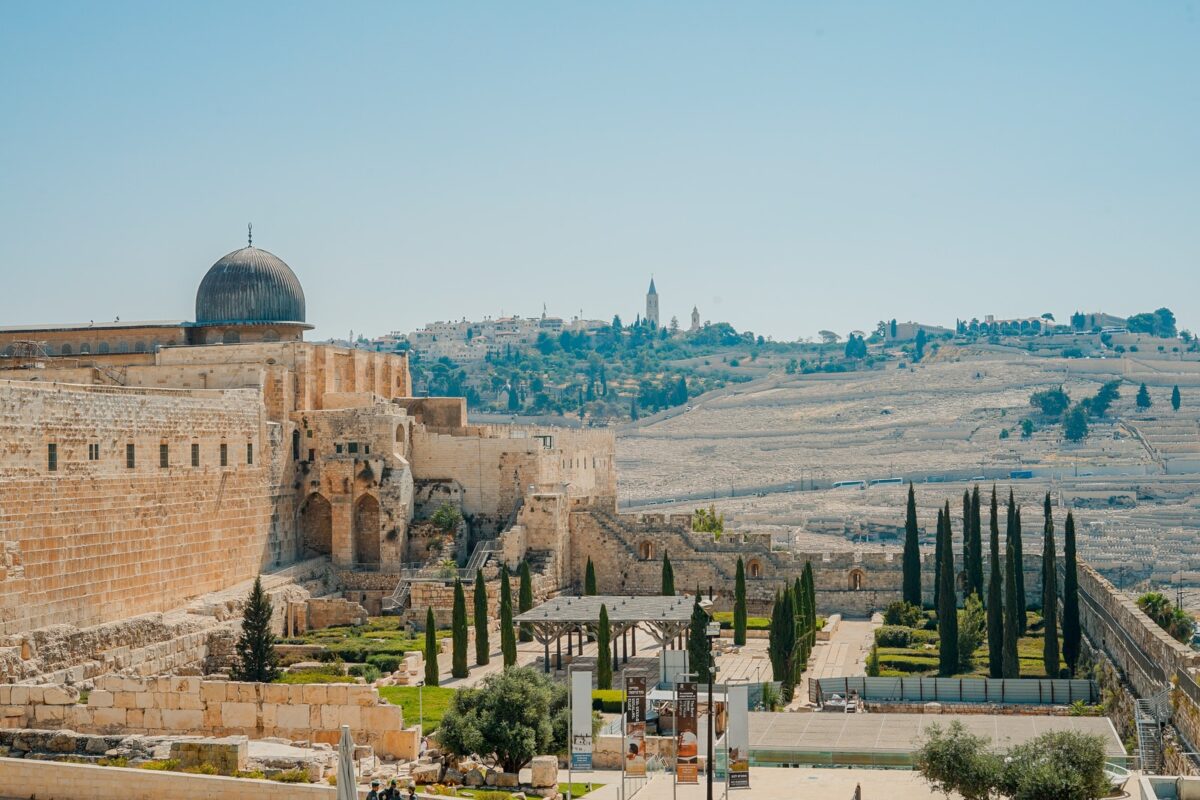Ahron Shapiro
Judy Maynard
aijac.org.au
On Monday May 10, more than 160 rockets were fired into Israel from Gaza, in a major escalation of the violence that has been centred on Jerusalem over recent weeks. Hamas, the terror group which rules Gaza, openly claimed the barrage – which included several missiles launched at Jerusalem – was intended to counter Israeli “aggression in Jerusalem and Al-Aqsa mosque.” Israel responded with attacks on Hamas targets in Gaza, killing at least 11 members of terrorist groups, with Gaza authorities claiming 20 deaths overall. Israel has promised a response that will continue for “days.”
International media has focused on the Palestinian protests surrounding the possible eviction of Palestinian tenants from Jewish-owned property in Jerusalem’s Sheikh Jarrah neighbourhood as the principal reason for an escalation in tension and violence on the Palestinian side.
In reality, however, the Sheikh Jarrah protests, which have been held weekly for some time with relatively little international coverage, and have only recently increased in frequency and intensity, are merely one element in a broader escalation with many causes. More details on the Sheikh Jarrah dispute – which is often being misrepresented in media reports – are below. However, while this controversy is certainly being used as a rallying cry by Palestinian factions, it is not the real cause of the current violence.
This broad escalation dovetails with the annual seasonal increase in anti-Israel incitement by Islamist and nationalist extremists that ride in on the coat tails of the month-long Ramadan holiday, but also this year involves meddling from Iran, and Palestinian politicking around a now-delayed Palestinian election – including inciting a non-existing crisis over Jerusalem’s al-Aqsa mosque – among other reasons.

Rocket damage of a house in Shaar HaNegev, near the Gaza border
Timeline of Violence
April 12
- As the holy Islamic month of Ramadan begins, Israeli police stationed near Jerusalem’s Old City are attacked with fireworks, rocks and firebombs by activists affiliated with the Fatah movement of Palestinian Authority President Mahmoud Abbas in violence that is believed to be related to Palestinian electioneering.
- Police respond by erecting metal gates that prevent large gatherings in front of the Damascus Gate of the Old City, infuriating Palestinians who see the Damascus Gate area as a public square for their community. Nightly protests and clashes with police ensue.
April 16
- Palestinians begin to circulate videos on the social media platform TikTok that show assaults on ultra-Orthodox Jews on the Jerusalem light rail and other places, sparking outrage in the Jewish community.
- Israeli police limit the number of worshippers at the Al-Aqsa Mosque to 10,000
April 18-19
- A rabbi looking to buy property in Jaffa is beaten by two local Arabs who oppose property sales to Jews in the area. The assault is filmed and shared on social media. Protests roil for two days.
April 21-26
- Hamas looks the other way while smaller Palestinian terror groups, largely sponsored by Iran, shoot 41 rockets or mortars from the Gaza Strip into Israel. Israel’s anti-rocket defence system Iron Dome shot down 10, with an additional 31 falling in open areas.
April 22
- Several hundred members of the extreme, Jewish group Lehava march about a kilometre from downtown Jerusalem to Damascus Gate, chanting anti-Arab slogans. Clashes erupt with Palestinians.
April 23-24
- A barrage of 36 rockets are fired overnight from the Gaza Strip into Israel, again by smaller Palestinian terror groups, largely sponsored by Iran. Two more rockets are fired the following day. The IDF disperses Palestinian rioters along the Gazan border with Israel.
April 28
- In an effort to ease tensions, Israeli police remove the barricades at Damascus Gate. Palestinian groups declare victory, vow to continue protests.
- Hamas, which has taken up the slogan of “defending the Al-Aqsa Mosque”, launches two rockets from the Gaza Strip towards Israel that fall short and land within the Gaza Strip.
April 29
- During a meeting of the Palestinian leadership, Mahmoud Abbas announces the postponement of the PA elections (which were supposed to be held on May 22, 2021). The pretext he gives is Israel’s refusal to allow the elections to be held in east Jerusalem – but almost all observers, including Palestinian ones, agree this is a decision Abbas wanted to take in any case.
May 2
- Six Israeli youth waiting at a bus stop at the Tapuah Junction in the West Bank are shot at by a terrorist riding in a passing vehicle. Yehuda Guetta, 19, later dies of his wounds. Two other youths are seriously injured. After a manhunt, a Palestinian suspect is arrested on May 5.
May 6
- Seasonal incendiary balloon attacks resume from the Gaza Strip into Israel after a several-month winter hiatus. Six fires break out in Israeli crops, fields and parklands
May 9
- At least 205 Palestinians and 17 police officers are wounded as clashes erupted on the Temple Mount on the final Friday of Ramadan as large forces of police were deployed as tens of thousands of Muslims came to worship.
- Reports make it clear that Palestinians stockpiled stone slabs, rocks, and fireworks around the site in preparation for violence – and then emerged from prayers to attack both Israeli police and Jewish worshippers at the Western wall below the Temple Mount. Hamas flags are also present at the protest. Police use crowd control methods in response including tear gas, stun grenades, and rubber bullets.
- Following the violence, videos showing stun grenades landing inside prayer rooms which had gone through doors left wide open during the clashes between police and rioters are used to stoke anger in Muslim circles with the battle cry that “Al Aqsa is in danger.” This claim has been used to foment protests and violence among Palestinians for many years.
- That same day Palestinian terrorists fire four rockets from the Gaza Strip toward the Israeli city of Ashkelon and surrounding communities, following a day of constant balloon-based arson attacks launched from the enclave.

Rocks stored on the Temple Mount for use by rioters
Incitement
Both before and after the May 9 Temple Mount clash, both Hamas and the supposedly more moderate Fatah movement associated with Mahmoud Abbas have been inciting clashes and violence as they manoeuvre for political power in the wake of the election cancellation.
To give but one example from Hamas, one leader over the weekend told the Palestinians of Jerusalem:
People of Jerusalem, we want you to cut off the heads of the Jews with knives. With your hand, cut their artery from here. A knife costs five shekels. Buy a knife, sharpen it, put it there, and just cut off [their heads]. It costs just five shekels. With those five shekels, you will humiliate the Jewish state.
Meanwhile, Fatah has issued a statement calling on Palestinians:
to continue this uprising… [Israeli policy] will lead to a comprehensive confrontation in all the Palestinian lands, including a reexamination of the rules of engagement… Fatah calls on everyone to raise the level of confrontation
Official Palestinian Authority Television has also increased the broadcast of songs promoting violence and mentioning sacrificing for Jerusalem.
The Sheikh Jarrah Dispute
The current controversy in Jerusalem regarding the possible eviction of Palestinian families from four properties in the neighbourhood of Sheikh Jarrah is not a matter of Israeli government policy, but is the result of a private property dispute that has been repeatedly before the Israeli courts for more than 50 years.
A decision of the Jerusalem District Court on 10 February 2021 was the latest finding in this long running legal saga. That finding, which has been appealed to Israel’s Supreme Court, upheld an earlier decision requiring several residents to vacate the properties in question, which have been found to belong to Jewish owners. It is currently being opportunistically conflated with a number of unrelated issues.
The suburb’s name. Sheikh Jarrah, is said to derive from a physician of the 12th century Muslim military leader Saladin. The Jewish name for the same area is Shimon Hatzadik (Simeon the Just), after a 3rd century BCE Jewish high priest whose tomb is located there. T
According to the Israeli Supreme Court, the land in question was purchased in 1875 by the local Ashkenazi and Sephardi Jewish communities from its Arab owners, due to its religious significance as the location of Shimon’s tomb. It was registered in the names of Chief Rabbis Avraham Ashkenazi and Meir Auerbach. Jewish communities began living in the area.
Two Jewish organisations, the Sephardic Community Committee and the Knesset Israel Committee, tried to register the land in 1946 with the British Mandatory authorities.
Transjordan (now Jordan) captured part of Jerusalem during the 1948 War of Independence and forcibly evicted the Jewish families from Sheikh Jarrah. Today, the area in mainly Palestinian but does have some Jewish resideents.
When Israel regained control of the area following the Six Day War in 1967 it passed a law allowing Jews whose families had been evicted by the Jordanians or the British to reclaim their property if they could prove ownership.
Pursuant to this, the two Jewish organisations registered the property with Israeli authorities in 1973, and in 1982 launched proceedings to evict the Palestinian residents as squatters.
The Israeli Magistrate Court found that the Palestinian families could not show ownership, but enjoyed the status of Protected Tenants, meaning they could continue living there so long as they paid a modest rent and maintained the property. This was mutually agreed in a document signed by the parties, in which the residents acknowledged that the Jewish organisations were the legal owners.
In 1993, the Jewish owners commenced proceedings against the resident families for non-payment of rent, illegal building, and illegally renting the property to others.
In February of this year, the District Court found in relation to the eight Palestinian resident families appealing against the eviction proceedings that:
- Three were descendents of residents who had in 1982 acknowledged the ownership of the Jewish organisations;
- It rejected the claim of four, that they had purchased the property in 1991 (19 years after the properties had been registered with Israeli authorities) from a man named “Ismail”, whom they didn’t identify, could not show had ever legally owned the property, nor could they demonstrate evidence that they had purchased it from him;
- The residents had never paid rent and had carried out illegal construction work on the property.
In earlier legal proceedings, ownership claims by Sheikh Jarrah residents on the basis of documents that appeared to have been forged or altered had been rejected.
A hearing on 10 May before the Supreme Court to appeal the eviction order has been delayed until June 8 to allow Israel’s Attorney General Avichai Mandelblit to decide whether to become a party to the case.
Please share this article so that others can discover The BFD.

